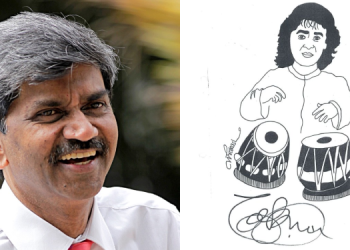Several publications have not gone in for a certification of their circulation figures via the Audit Bureau of Circulation. For several who have, there is a drop, as one would expect post two years of Covid-19, not to forget the zooming cost of newsprint.
Some regional language publications have used the opportunity around English dailies’ lack of certified circulation data to question the premium they command – a longstanding peeve.
We asked multiple stakeholders about the lack of certified circulation figures, drop in circulation and the premium commanded by English dailies.
‘ABC only a yardstick’
– Rohin Desai, National Buying Head – BMeG

Is lack of ABC certification likely to affect ad rates?
There are two facets to the question — one is when we talk about advertising rates for commercial (establishments) and other government businesses. If it’s government business, then yes, lack of ABC certification will affect the ad rate because any publication DAVP rate is derived from its circulation numbers. But regarding commercial advertising, the lack of ABC certification doesn’t affect ad rates much as the business is driven more by readership and not circulation numbers. ABC certification is only a yardstick to understand the publication volume and, in some sense, how much the coverage is.
What is the premium commanded by English language media? Is it justified today?
Yes, the English language commands a significant premium over the vernacular language.
The justification part primarily weighs on the perspective of the advertiser’s requirement and the end objective of the campaign. Vernacular media helps you with a customised reach to your media plan and becomes cost-effective. The English language media provides more targeted reach with zero spillage when the objective is to reach key decision-makers. National brands want to associate more with English dailies as it is the best way to get the decision-makers with one media plan providing coverage in all the major cities of importance.
‘Pricing based on impact, not certifications’
– Malcolm Raphael, Senior Vice President, Times Response

Is lack of ABC certification likely to affect ad rates?
Advertisers use different mediums and platforms for different objectives. Print is used to influence opinion, create desire and start conversations. And this too applies only to those publications which are “brands”. The Times of India and The Economic Times are very strong brands built over many years and through focused effort. Numerous brands have been built through the pages of our newspapers. We have not based pricing based on certifications, but rather on the impact we are able to create. Multiple brand campaigns in TOI in recent times, have started many a conversation across platforms and if you notice, it is our newspaper that gets referenced to in these conversations. What better testimony can there be?
What is the premium commanded by English language media? Is it justified today?
We have our own science when it comes to pricing and it is not in comparison to any other publication or language. English language media has always delivered more affluent audiences who influence the choices of a wider consumer base. Today, it is no longer about just an ad in the paper. It is about how an ad can start a wider conversation in society. To start conversations, you need to reach the most influential set of consumers across genres, which is what English publications do. How often do you see someone share or talk about an ad that has appeared in regional media?
‘Impetus to decipher grid beyond reach’
– Amit Sethiya, Head of Marketing, Syska Group

Is lack of ABC certification likely to affect ad rates?
Marketers have traditionally referred to ABC data while approaching the print space for their brand campaigns in the country. In the current evolution of media consumption, it is imperative to take note of not only the circulation but also to diagnose the information that is truly reflective of the Indian population for making informed decisions. This understanding is likely to become the more acceptable currency by all the stakeholders in the media ecosystem. Impetus given to decipher the complex grid beyond reach is making its presence felt and hence going ahead, advertising rates might witness a marginal correction.
What is the premium commanded by English language media? Is it justified today?
English language media fundamentally always had an upper hand as compared to regional counterparts, riding high on the earlier established belief of high spends by ‘evolved customers’ basis the spoken language. Advocacy by large media agencies only aided the rates to go north and that too steeply. ROI conversations have taken the center stage above and beyond the customer segmentation defined by linguistic preferences. Businesses and marketers have become more liberal in today’s time while gauging the performance possibilities and these dynamics might prime up the required normalisation of the premium commanded by the English dailies.
‘Concentrate on the recovery phase’
– Varghese Chandy, VP – Marketing, Ad Sales, Malayala Manorama

It doesn’t come as a surprise to me because there has been a huge drop, particularly in the Northern market. Audit Bureau of Circulation is an audited number submitted by the print players and it is verified by the firm. I am glad that there is some currency in the market. For instance, in Kerala we had only 13 to 14 pc drop, whereas in other regions you see a 20-plus pc drop and for some particular titles there is a drop of 35 to 44 pc. This is something which needs to be read as what happened during the Covid period.
In the absence of any other currency, I think ABC is what everybody will follow. During the Covid period, no data was released, no data is available for the last three years. The comparison is done with 2019 figures that’s why there is a thought that there is a huge drop in the number of copies. There was a huge drop in the copies during the beginning of the Covid in the rest of the country and from there, there is a recovery.
My advice to the entire publishing industry would be to face the facts boldly and concentrate on the recovery phase.
‘Most regional language newspapers could reach pre-Covid circulation in 6 to 12 months’

– Devika Shreyams Kumar, VP – Operations, Mathrubhumi
The circulation audit figures of the Audit Bureau of Circulation [ABC] for the period January to June, 2022 points to the fact that when compared to the English language newspapers, regional/vernacular newspapers suffered much less due to the Covid-19 pandemic. It can be said that the worst is over, and the newspaper industry is showing an upward trend. Indian newspapers have successfully navigated through the tough times of Covid-19-induced economic downturn and spiralling newsprint prices.
If this trend is any indication, then, most of the regional language newspapers could reach the pre-Covid figures in circulation in the next 6 to 12 months.

















